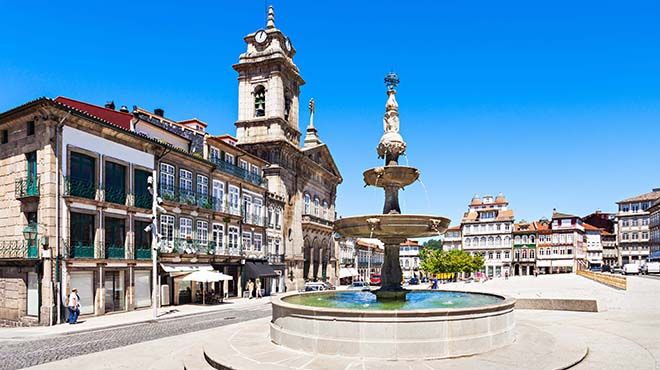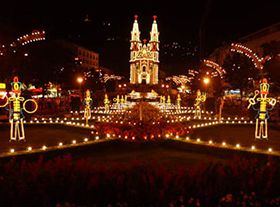Largo do Toural

Largo do Toural
Other
Whilst the atmosphere in Largo de São Tiago evokes memories of the city´s mediaeval past, the architecture of Largo do Toural highlights the great concern of the town planners in the 18th-century period of the Enlightenment with producing wide and spacious areas, revealing the different phases in the urban history of Guimarães that are still preserved today.
If you continue along Rua Paio Galvão, you will find the Museu Martins Sarmento, dedicated to collections of archaeology, which occupies part of the beautiful mediaeval cloisters of the Convento de São Domingos.
Walking along by the side of the convent, you will arrive at Rua D. João I, flanked by old houses and balconies.
At the end of the street, to the left, is the small chapel of Senhora da Ajuda, where the date 1600 has been carved into the stonework.
There are many interesting features to be noted in the area between Largo do Toural, Largo João Franco and Largo da Condessa de Juncal: Castelo dos Almadas (Rua Dr. Avelino Franco), Capela do Anjo da Guarda, Palácio dos Lobo Machado, a typical 18th-century manor-house, and the Casa dos Coutos, directly opposite (in Rua Dona Maria II).
If you continue along Rua Paio Galvão, you will find the Museu Martins Sarmento, dedicated to collections of archaeology, which occupies part of the beautiful mediaeval cloisters of the Convento de São Domingos.
Walking along by the side of the convent, you will arrive at Rua D. João I, flanked by old houses and balconies.
At the end of the street, to the left, is the small chapel of Senhora da Ajuda, where the date 1600 has been carved into the stonework.
There are many interesting features to be noted in the area between Largo do Toural, Largo João Franco and Largo da Condessa de Juncal: Castelo dos Almadas (Rua Dr. Avelino Franco), Capela do Anjo da Guarda, Palácio dos Lobo Machado, a typical 18th-century manor-house, and the Casa dos Coutos, directly opposite (in Rua Dona Maria II).




 Explore
Explore 
 Remember and Share
Remember and Share 


